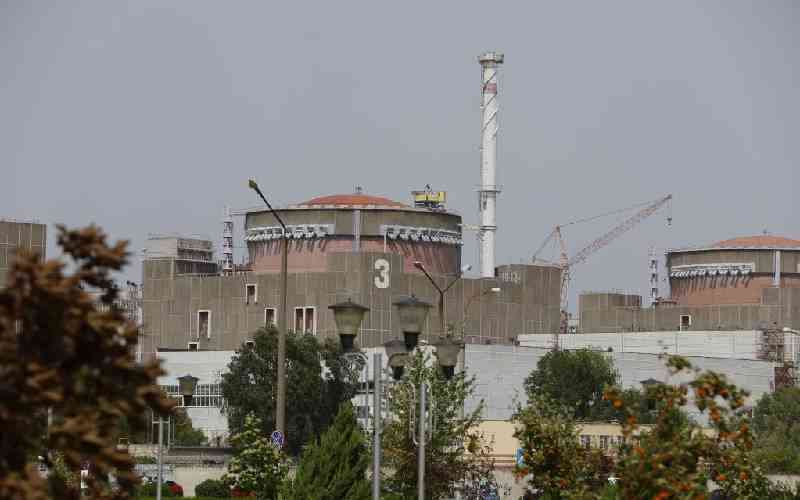
Over the last five years, manufacturers have increased power consumption by a tenth. The amount that large industries consumed in the year to June 2018 stood at 4,225-gigawatt-hours (GWh), which is in comparison to 3,818GWh that they consumed in the period to June 2013.
The commercial and industrial consumers, which number about 3,900 and accounting for the bulk of power consumed in the country, grew their consumption of electricity by 10 per cent.
It is thus odd that for the manufacturers to benefit from the latest incentives by the Government aimed at reducing power prices for industries, they would have to grow their consumption by 10 per cent every year.
The Ministry of Energy recently published a Legal Notice and put in motion the much-awaited Electricity Rebate Programme, which allows industries to deduct up to 30 per cent of their electricity expenses from their taxable income. The plan might mean cheaper power for manufacturers, who have always cited electricity costs as among the factors that have led to Kenya being an uncompetitive investment destination.
The programme would mean a possible reduction in the Government’s income tax from the industries but the move would also enable industries to produce more for local and export markets. This would also possibly reduce prices for consumer goods, which might eventually translate to more consumption taxes.
There are, however, tough conditions that manufacturers will have to meet to benefit from the programme. This includes increasing their power consumption by 10 per cent every year, which would mean that they will need to do what they did over five years in just one year.
The manufacturers will also have to record a 10 per cent increase in investments as well as sales every year.
According to the legal notice published by the Ministry, the benefits accrued will vary from one manufacturer to another, with those whose plants are operating at 100 per cent getting to deduct the maximum 30 per cent.
“A manufacturer with an actual overall performance (AOP) of 100 per cent qualifies for a maximum rebate of an extra 30 per cent of the electricity cost incurred for purposes of computation of taxable income,” said the notice by Ministry of Energy Cabinet Secretary Charles Keter.
“In the first year of claim, 20 per cent of the cost of electricity from the grid will be allowed and the remaining 10 per cent by weighted Key Performance Indicators.” “For subsequent years, the rebate claimed will be determined by the weighed key performance indicator.”
The KPIs that will be used to gauge the level of benefit that manufacturers get are the actual consumption, a 10 cent increase in capital investments over the year and an annual 10 per cent increase in sales. These are aimed at guaranteeing the rebates indeed have an effect of growing the manufacturing sector.
The benefits will, however, not accrue to large electricity users engaged in power production. “The rebate programme shall not apply to manufacturers involved in the generation, transmission and distribution of electrical energy,” said Keter.
The manufacturers last year welcomed the move but raised concerns that it took too long to implement. This was largely on account of lack of conditions for the determination of the rebate entitlement. The Kenya Association of Manufacturers (KAM) has in the past noted that the rebates would substantially bring down the cost of production, making locally made products more competitive.
“The intended impact of the rebate programme promises to be massive for the local industry. Its effective implementation will enhance the competitiveness of locally made products in the region,” said KAM in a previous analysis, then pushing for the enactment of the rebate programme.
Stay informed. Subscribe to our newsletter
Impact to GDP
“For instance, the electricity cost to produce a bag of cement is on average about 20 per cent of the overall cost of production. With the rebate programme, the cost of the same bag will reduce by an approximate five per cent. It is also projected that the impact to GDP will be immense as the 30 per cent rebate will reduce the cost of doing business for manufacturers and therefore enhance their capacity to produce for local markets and grow exports.”
The rebate programme is one of the mechanisms the Government is using in an attempt to lower power costs. It has been implementing the Time of Use Tariff that offers manufacturers a 50 per cent discount when they consume during the off-peak hours of between 10pm and 6am.
The tariff has, however, had difficulties in uptake owing to conditions that were put in place that manufacturers have to meet to benefit.
There are plans to review the conditions and relax some to increase the number of benefitting manufacturers. At the moment, about 40 per cent of the 3,900 commercial and industrial consumers are enjoying the tariff.
 The Standard Group Plc is a
multi-media organization with investments in media platforms spanning newspaper
print operations, television, radio broadcasting, digital and online services. The
Standard Group is recognized as a leading multi-media house in Kenya with a key
influence in matters of national and international interest.
The Standard Group Plc is a
multi-media organization with investments in media platforms spanning newspaper
print operations, television, radio broadcasting, digital and online services. The
Standard Group is recognized as a leading multi-media house in Kenya with a key
influence in matters of national and international interest.
 The Standard Group Plc is a
multi-media organization with investments in media platforms spanning newspaper
print operations, television, radio broadcasting, digital and online services. The
Standard Group is recognized as a leading multi-media house in Kenya with a key
influence in matters of national and international interest.
The Standard Group Plc is a
multi-media organization with investments in media platforms spanning newspaper
print operations, television, radio broadcasting, digital and online services. The
Standard Group is recognized as a leading multi-media house in Kenya with a key
influence in matters of national and international interest.









